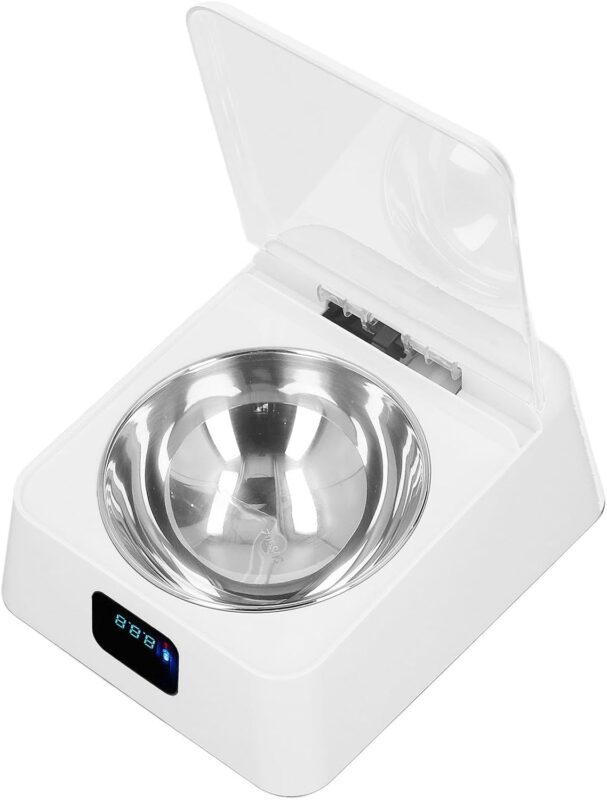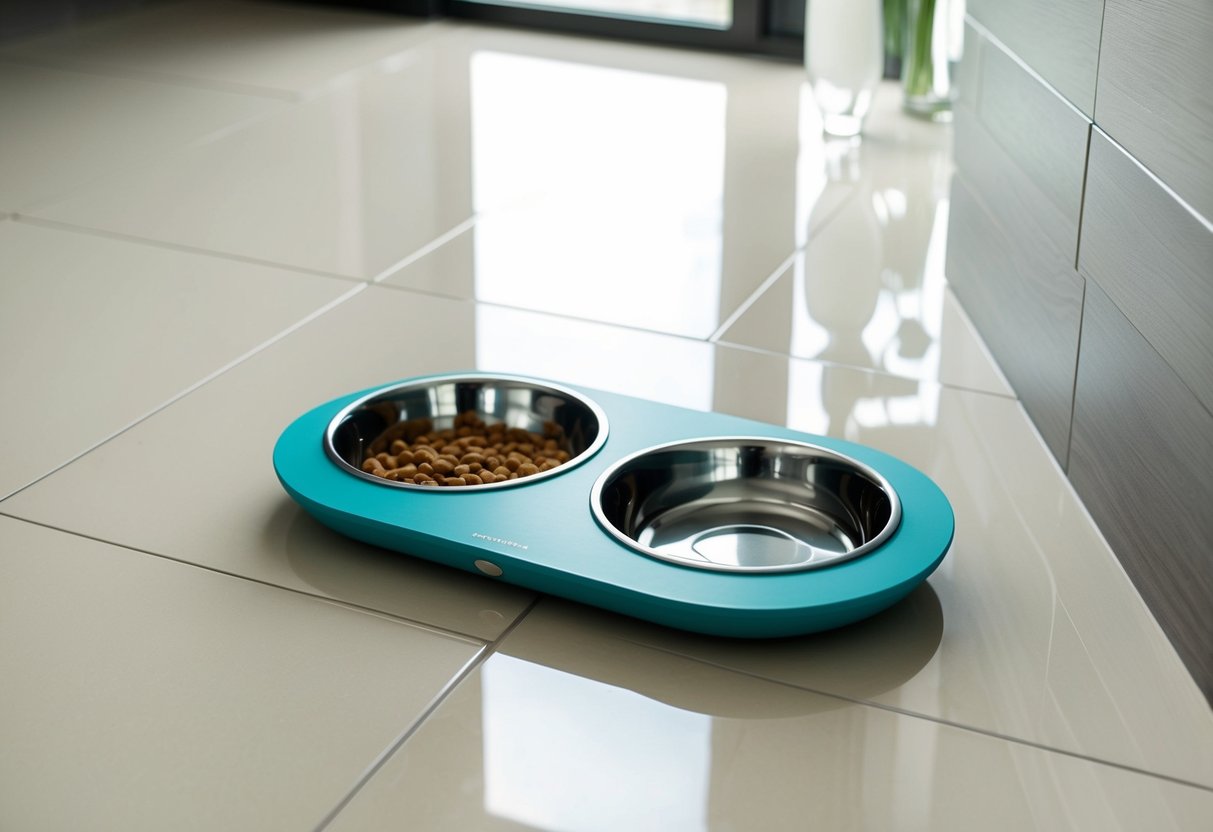Choosing the right cat food and water bowls can make a big difference for the health and happiness of our feline friends. Investing in high-quality cat bowls and water fountains is essential for keeping our cats well-fed and hydrated. Whether we are considering a stylish ceramic bowl that prevents whisker stress or a smart water fountain that keeps water fresh, selecting the best options involves more than just aesthetics.
Many of us care for multiple cats and need feeding solutions that simplify our lives while ensuring each pet’s needs are met. Smart feeding devices can help manage feeding schedules and portion sizes, making mealtime stress-free for both us and our pets. We’ll explore top picks and features to consider to help make informed choices.
Key Takeaways
- Picking the right cat bowls is key for health and hydration.
- Smart devices offer easier feeding solutions for multi-cat homes.
- Quality choices can enhance our pets’ mealtime experience.
- Key Takeaways
- Understanding Cat Bowls
- Exploring Water Fountains for Cats
- Materials and Design: Pros and Cons
- Key Considerations for Cat Food Bowls
- Water Fountain Attributes
- Health and Hygiene
- Behavior and Comfort
- Practical Advantages for Owners
- Choosing the Right Feeder for Multiple Cats
- Strategic Placement of Bowls and Fountains
- Top Cat Bowls for Various Needs
- Leading Water Fountains for Cats
- What are the best food and water bowls for cats?
- Do cats prefer elevated food and water bowls?
- Can cats develop whisker fatigue from certain food bowls?
- Is it better to separate a cat's food and water bowls?
- How often should you clean your cat's food and water bowls?
- What material is safest for cat food and water bowls?
Types of Cat Bowls and Water Fountains
Choosing the right cat bowls and water fountains can make a big difference in our pets’ lives. From reducing whisker stress to keeping water fresh, each type has its own benefits. We’ll look into various materials and designs, focusing on what works best for our feline friends.
Understanding Cat Bowls
Cat bowls come in a variety of shapes and materials. Stainless steel bowls are popular because they are durable and don’t harbor bacteria. Ceramic cat bowls, on the other hand, are stylish and often heavier, so they don’t tip over easily. However, they can break if dropped.
Cats can be sensitive to the feel and smell of plastic cat bowls, which might make them less preferable for some. It’s important to choose a wide and shallow bowl to prevent whisker stress, a common issue when cats’ whiskers touch the sides of their bowls too much. A great cat bowl option is one with a two-cup capacity, perfect for daily use.
Exploring Water Fountains for Cats
Water fountains are an exciting option for providing cats with fresh water. Many cats are attracted to running water, and a fountain can encourage them to drink more. This is especially helpful for keeping cats hydrated, which is crucial for their urinary health.
These devices often come with features like adjustable flow settings and replaceable filters to keep water clean. Some have quiet motors, which is ideal for keeping a peaceful home environment. It’s important to choose a fountain that is easy to take apart and clean, ensuring that bacteria and mold don’t develop.
Materials and Design: Pros and Cons
When choosing between materials, we have to weigh the benefits and potential drawbacks. Stainless steel bowls are durable and easy to clean, making them a great choice for any household. Ceramic bowls are heavier and come in many designs but should be checked for cracks regularly.
Plastic bowls are lightweight and affordable but can retain odors and lead to allergic reactions in some cats. For fountains, stainless steel or ceramic designs are often preferred over plastic due to their longevity and ease of cleaning. Selecting the right material and design goes a long way in keeping our cats both happy and healthy.
Features of the Best Cat Bowls and Water Fountains

Choosing the perfect cat bowls and water fountains can make a big difference in keeping our furry friends happy and healthy. With smart design and thoughtful features, we can ensure our cats are comfortable while enjoying their meals and drinks.
Key Considerations for Cat Food Bowls
When selecting the best cat food bowls, it’s important to think about whisker fatigue. Cats may avoid eating from bowls that cause their whiskers to brush against the sides. Therefore, we recommend wide and shallow bowls to minimize discomfort for our kitties. A wide and shallow bowl helps prevent this issue and makes mealtime more enjoyable.
Material is another important consideration. We should opt for non-porous materials like stainless steel or ceramic. These materials are more hygienic and easier to clean than plastic. Plus, they are often dishwasher safe, saving us time and effort in maintaining proper hygiene for our feline companions.
Water Fountain Attributes
Water fountains for cats can ensure a constant supply of fresh water, which many cats find appealing compared to stagnant bowls. Cats often prefer running water as it can seem fresher and more inviting to them. Cat water fountains with added features can help entice picky drinkers.
When choosing a fountain, look for one that is easy to disassemble for cleaning to maintain optimal hygiene. It should have a large capacity to reduce the frequency of refilling, ensuring a steady supply of water. Automatic features, like a quiet pump and adjustable water flow, can be beneficial too, making the fountain user-friendly for both us and our pets.
Benefits of Selecting the Right Bowl and Water Fountain
Choosing the perfect cat bowls and water fountains is essential for our furry friends’ wellness. These items can influence their health, comfort, and ease of maintenance for us as owners.
Health and Hygiene
Using the right bowl or water fountain is crucial for our cats’ health. Some bowls, like elevated cat bowls, can help with digestion by reducing strain on their necks. It also prevents whisker fatigue, which can happen when their whiskers touch the sides of the bowl too often.
For cats who are picky about their water, a cat water fountain might encourage them to drink more. The flowing water stays fresh longer, which also reduces bacteria buildup. Some fountains are self-cleaning, making them an easy-to-clean option that keeps the water hygienic.
Behavior and Comfort
Cats have individual preferences, and their comfort is key. Elevated cat bowls can help older cats or those with arthritis feel more comfortable during mealtime. Some cats prefer the sound and movement of water in a fountain and find it more inviting than a bowl.
Choosing the best cat bowl based on our cat’s preferences can make them feel at ease. Cats are more likely to eat and drink properly when they’re comfortable, which keeps them happy and healthy. For households with multiple cats, having separate bowls and fountains prevents territorial disputes, ensuring peace and harmony.
Practical Advantages for Owners
For us as pet owners, convenience is a huge factor. Bowls that are easy to clean save valuable time; some can even go in the dishwasher. Cat fountains, while needing power, reduce the frequency of refills thanks to their large water capacity.
When choosing among the best cat bowls, consider materials like stainless steel or ceramic, which are durable and hygienic. A cat water bowl or fountain with simple assembly and maintenance routines can make a world of difference. This ensures we spend less time cleaning and more time enjoying our cats’ company.
Feeding Solutions for Multi-Cat Homes
Feeding multiple cats requires smart solutions. Automatic feeders help manage meal times efficiently, while the strategic placement of bowls reduces tension during feeding.
Choosing the Right Feeder for Multiple Cats
Automatic feeders can be a lifesaver in multi-cat homes. They deliver precise portions at scheduled times. This means we can control how much each cat eats, which is especially helpful for weight management.
Stainless steel cat bowls are a great choice. They’re durable, hygienic, and easy to clean. Investing in shallow bowls can also make feeding time more comfortable for our cats. Shallow bowls help avoid whisker fatigue, which is common in deeper bowls. For homes with many cats, having enough feeders and bowls can prevent aggressive behavior. Cats won’t have to fight over food if everyone has their own spot.
Strategic Placement of Bowls and Fountains
Where we put our cat food bowls and water fountains is key. We should spread them out around the house to avoid crowding. This not only gives each cat its own space to eat and drink peacefully, but it can also prevent dominant cats from bullying others.
Placing bowls in quiet areas helps reduce stress. Cats prefer calm spots for their meals. If possible, use elevates surfaces. Putting bowls and fountains at a comfortable height may encourage healthy posture and eating habits. Water fountains can encourage more drinking, keeping our cats well hydrated. Multiple locations mean cats have easy access to food and water any time they need it.
Product Recommendations and Top Picks
Finding the right bowls and water fountains for our feline friends can improve their eating and drinking experience. Elevated and stainless steel bowls offer comfort, while water fountains ensure fresh hydration.
Top Cat Bowls for Various Needs
Choosing the right cat bowl depends on our cat’s needs and preferences. One of the best cat bowls available is the PETKIT seamless stainless steel bowl. Its whisker-friendly design and tilting feature make it suitable for cats that dislike pressure on their whiskers.
Elevated bowls can aid digestion, so they might be best for older cats or those with joint issues. For a stylish option, ceramic cat bowls like the Disney Mickey Mouse bowl offer both functionality and a playful design. The non-skid surface ensures it stays in place during feeding.
Leading Water Fountains for Cats
Cat water fountains are smart devices that keep water fresh and enticing. A top pick is the YauYik Extra-Wide Raised Bowl, which combines modern aesthetics with functionality. It helps align a cat’s spine and esophagus and is found on Amazon.
Stainless steel is durable and resistant to bacteria, making it ideal for cleanliness-focused homes. Elevated water fountains also help reduce neck strain for cats, making it easier for them to drink. These features ensure that our cats stay hydrated with minimal fuss.
Frequently Asked Questions
We’ve gathered some common questions about cat food and water bowls to help you make the best choices for your feline friends. From choosing the right materials to placement and maintenance, we’re here to guide you.
What are the best food and water bowls for cats?
The best bowls for our cats are often made from stainless steel or ceramic. These materials are durable, easy to clean, and don’t hold odors or bacteria. Plastic bowls can be prone to scratches and can harbor bacteria, so it’s best to avoid them if we can.
Do cats prefer elevated food and water bowls?
Elevated bowls can be especially beneficial for older cats or those with arthritis. They make it easier for our cats to eat and drink without bending too much, which can be more comfortable for them. For many cats, elevated bowls can be a great option for promoting ease of use.
Can cats develop whisker fatigue from certain food bowls?
Yes, our cats can experience whisker fatigue if their whiskers repeatedly touch the sides of a deep or narrow bowl. To prevent this, we should opt for shallow and wide bowls, allowing their whiskers to remain unstressed. This ensures they stay comfortable during meal times.
Is it better to separate a cat’s food and water bowls?
Separating food and water bowls can keep contamination to a minimum. Some cats are particular about cleanliness and may refuse to drink water that has food particles in it. Separate bowls help keep the water fresh and encourage our cats to stay hydrated.
How often should you clean your cat’s food and water bowls?
Keeping our cat’s bowls clean is crucial for their health. We should wash food bowls after every meal, especially when using wet food. Water bowls should be cleaned daily to prevent bacterial growth. Regular sanitization can keep harmful bacteria at bay.
What material is safest for cat food and water bowls?
Stainless steel and ceramic are the safest choices for our cat’s bowls. These materials are non-porous and don’t leach harmful chemicals. They’re also easy to clean and sanitize, ensuring our cats have a safe eating environment. Avoiding plastic helps minimize exposure to risks.

